Table of Contents
Despite their humble appearance, green onions — also sometimes referred to as scallions — are SO much more than just an ordinary garnish. This inexpensive member of the allium family is extremely versatile, and can add both a bright pop of color and a sharp, peppery freshness to an endless variety of dishes.
Closer to the tip of the plant, the thin, hollow tubes of the greens have a more fresh, mild onion flavor. They’re perfect for slicing thin and using as a fresh garnish, or for mixing into dishes to bring a delicate crunch to every bite.
The denser white portions down toward the roots, however, are much more pungent and similar to regular raw onion in flavor. These usually need to be cooked down slightly, either in a quick sauté or tossed in a soup, to take off their edge.
How to Cut Green Onions
Jump to the recipe for the full instructions, ingredient amounts, and a printable recipe.
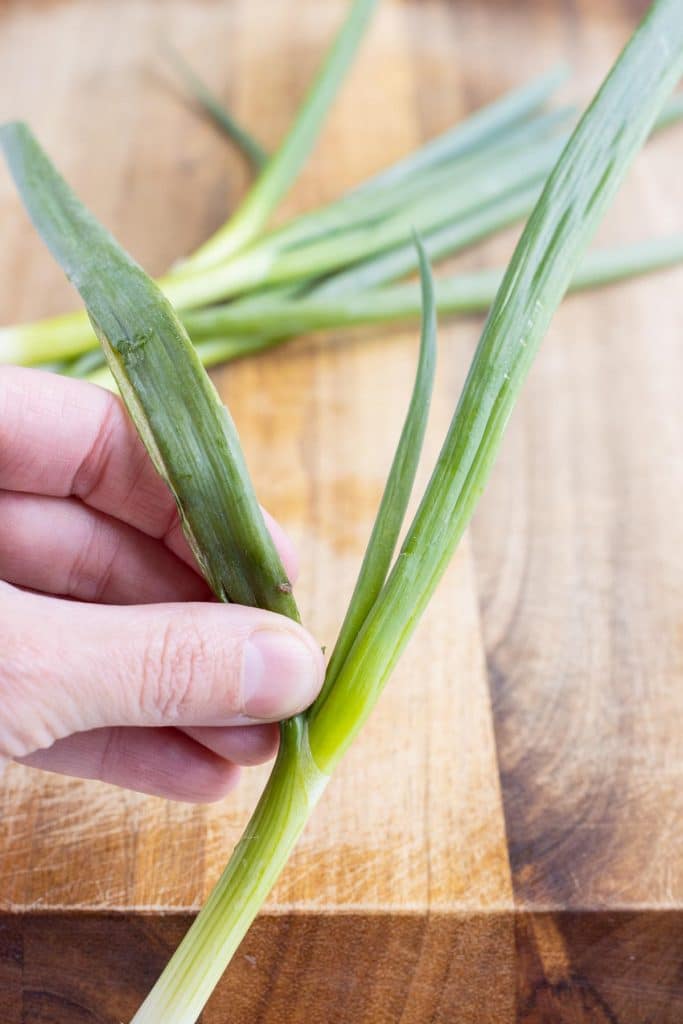
- Rinse and remove. Green onions should be rinsed and gently scrubbed with the tips of your fingers to ensure any lingering surface dirt is washed away. Running water also helps with removing any thin, loose layers of the onions which may have gone soft or slimy toward the root end. This is very common, occurring naturally as a side effect of the harvesting and shipping process in store-bought scallions, and doesn’t indicate any spoilage of the main vegetable. Likewise, unless the onions are extremely fresh, the more beaten up outermost layer of onion will most likely have to be pulled off and discarded.
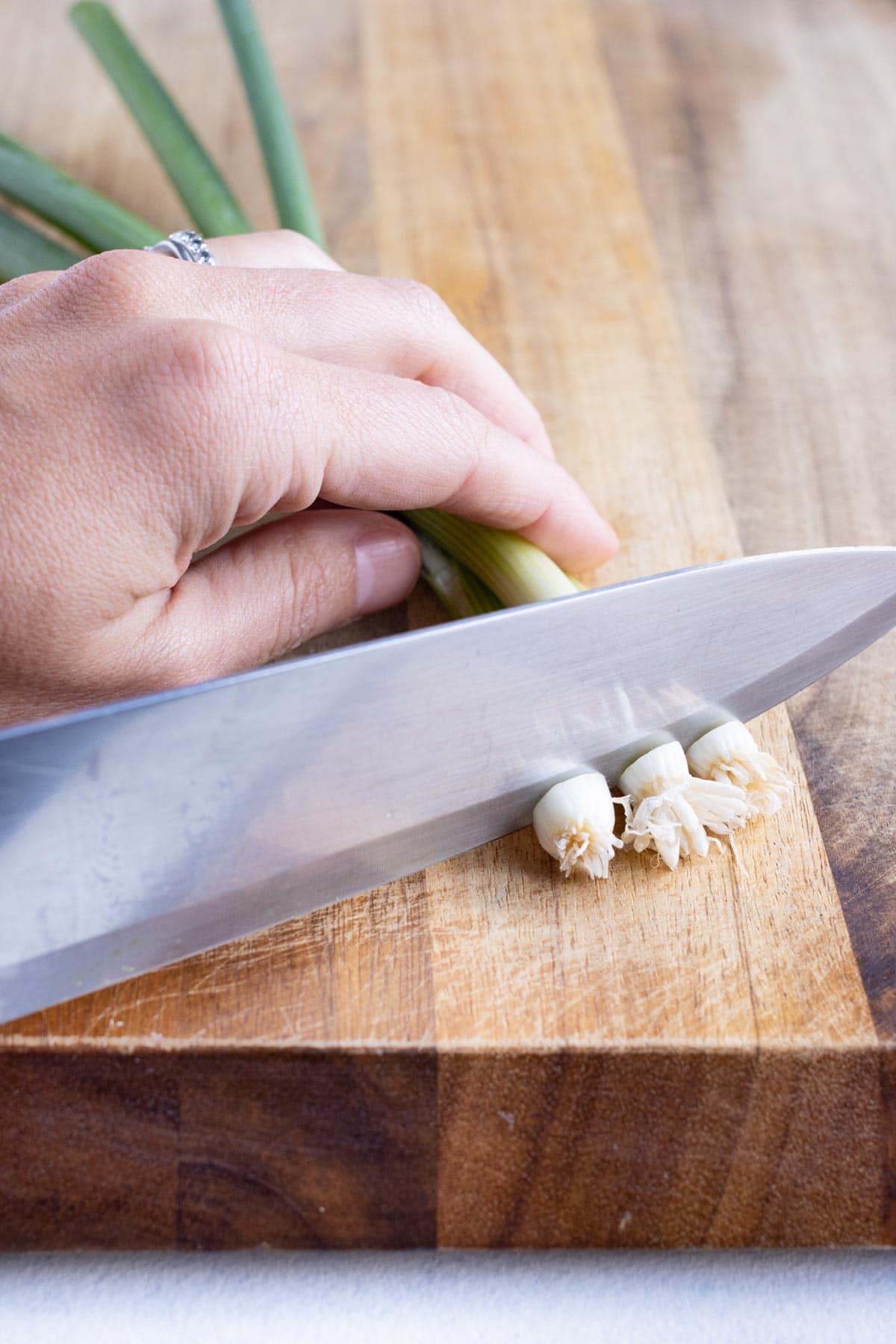
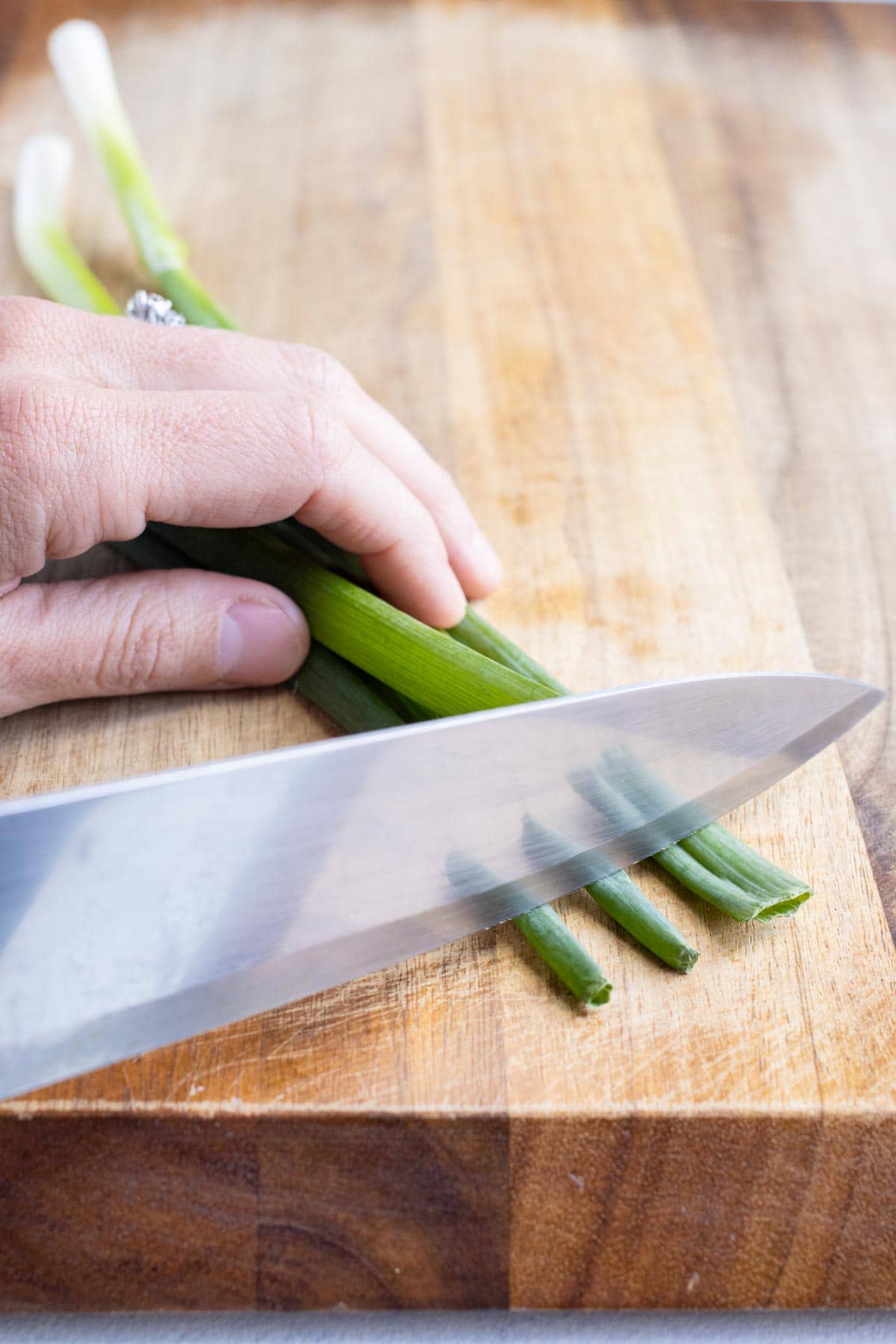
- Cut the ends. Using a sharp chef’s knife, cut straight through the bottom of the onions crosswise, trimming away roughly ½-inch of the white portion along with the roots. At the other end, roughly ¼-inch of the green stalks — or however much has a worn-down appearance — should be trimmed away, too.
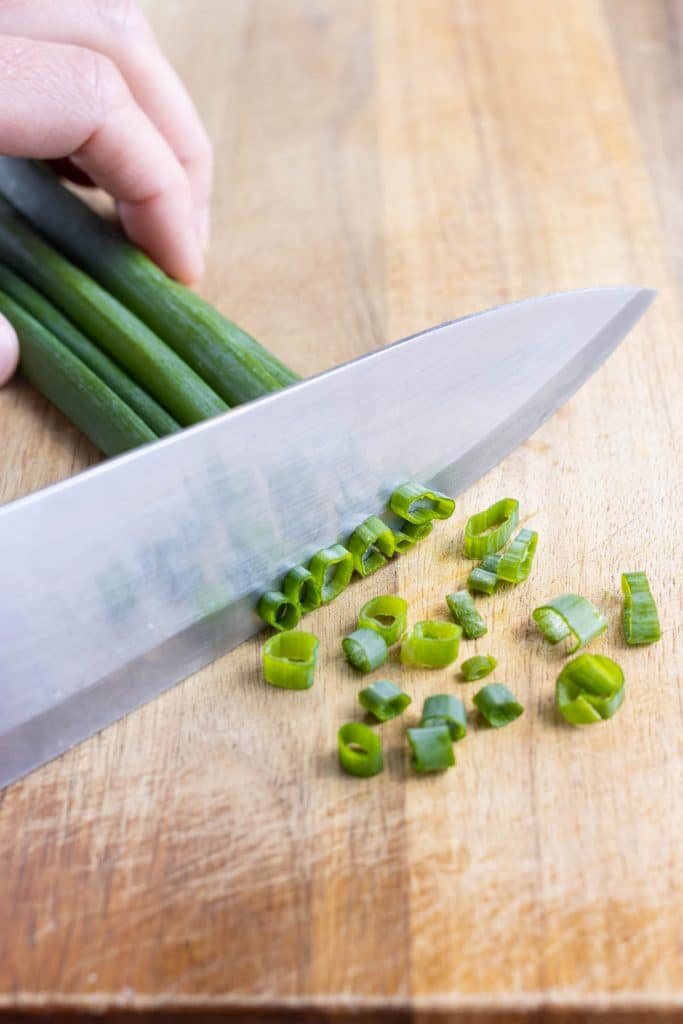
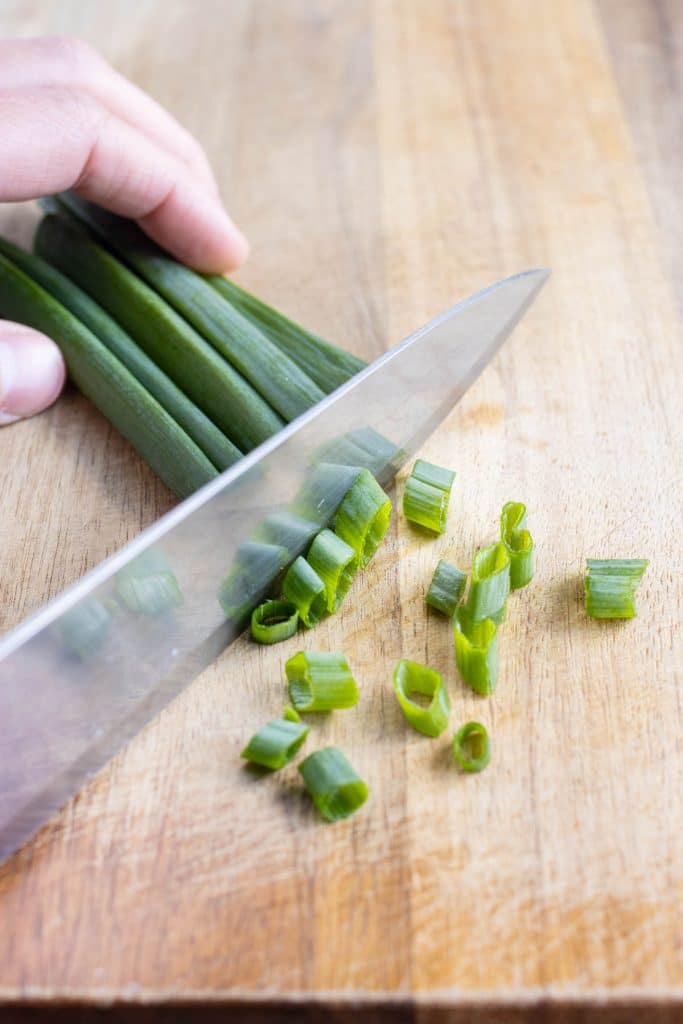
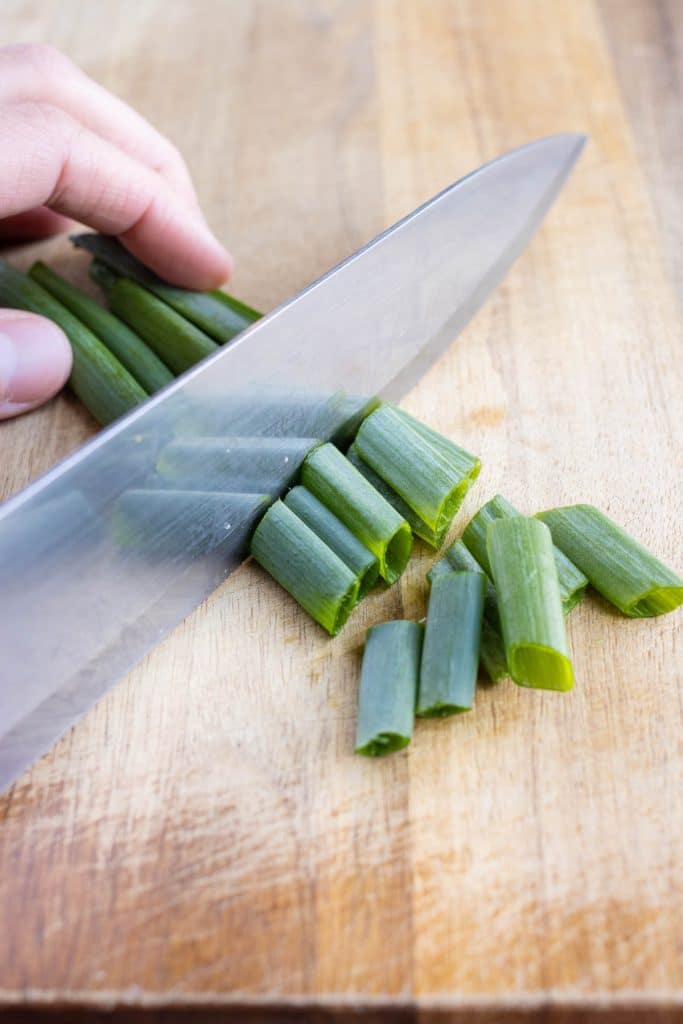
- Slice in half. For easier use, it is best to cut the onions in half crosswise before slicing, to separate the whites from the greens.
- Cut the green parts. The thin, delicate green stems of the scallions can be sliced as thick or thin as you like, depending on preference and what their use will be. They can be cut straight across, or in longer pieces on the diagonal, or at a bias, for a prettier presentation.
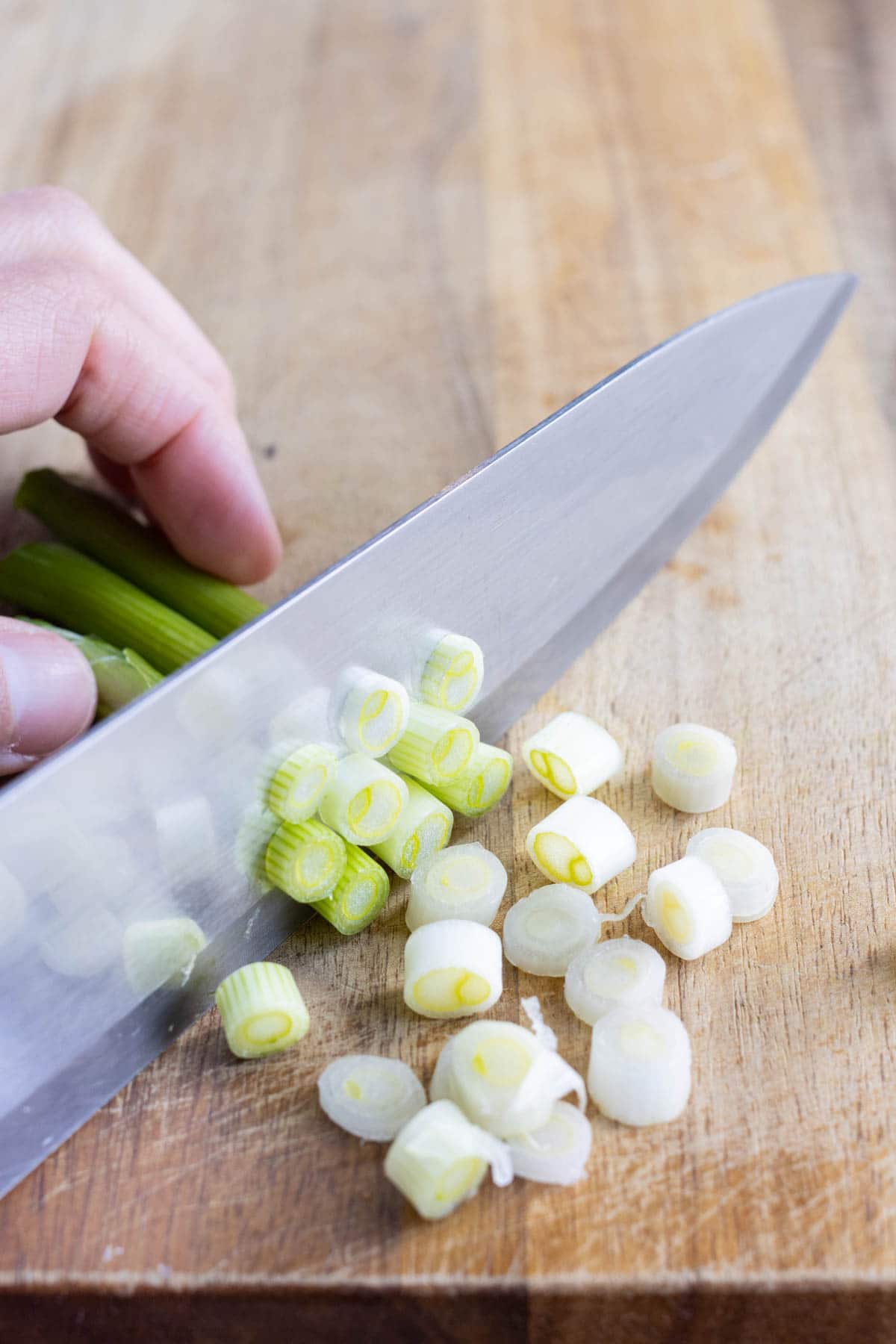
- Chop the white. Gather together the whites of the onions in one hand and slice them in exactly the same way. It is recommended to slice the whites of the scallions thinly, as their flavor is much more intense. While the whites are perfectly safe to be eaten raw alongside the greens as well, be aware that their taste can easily overpower dishes in their uncooked form. So it’s recommended to cook these up for the most satisfying results.
FAQs
Any part of the green onion can be used for a salad, depending on its intended purpose.
The greens make for a beautiful pop of color and a much more delicate oniony flavor, whereas the whites can be sliced thin and added to a vinaigrette for a lovely punch of flavor.
Generally a recipe will indicate whether the whites, the greens, or both portions of the scallion are called for. However, when in doubt, it’s usually the safest bet to use the greens.
Cutting your onions to at least 1-1½ inches above the bulb allows for enough remaining plant material to begin regrowing. These bulb ends can be placed in a small jar or clear glass cup with just enough water to cover the root ends, and stored in a spot indoors where they can get warmth and sunlight.
Within a week, with regularly changed water, the bulbs should begin gradually regrowing a stalk from the center.
You can expect to be able to regrow onions from the same bulb about 3-4 times.
Spring onions are different from green onions. Spring onions have a larger, more rounded bulb and their leaves tend to be much more intense in flavor than green onions.
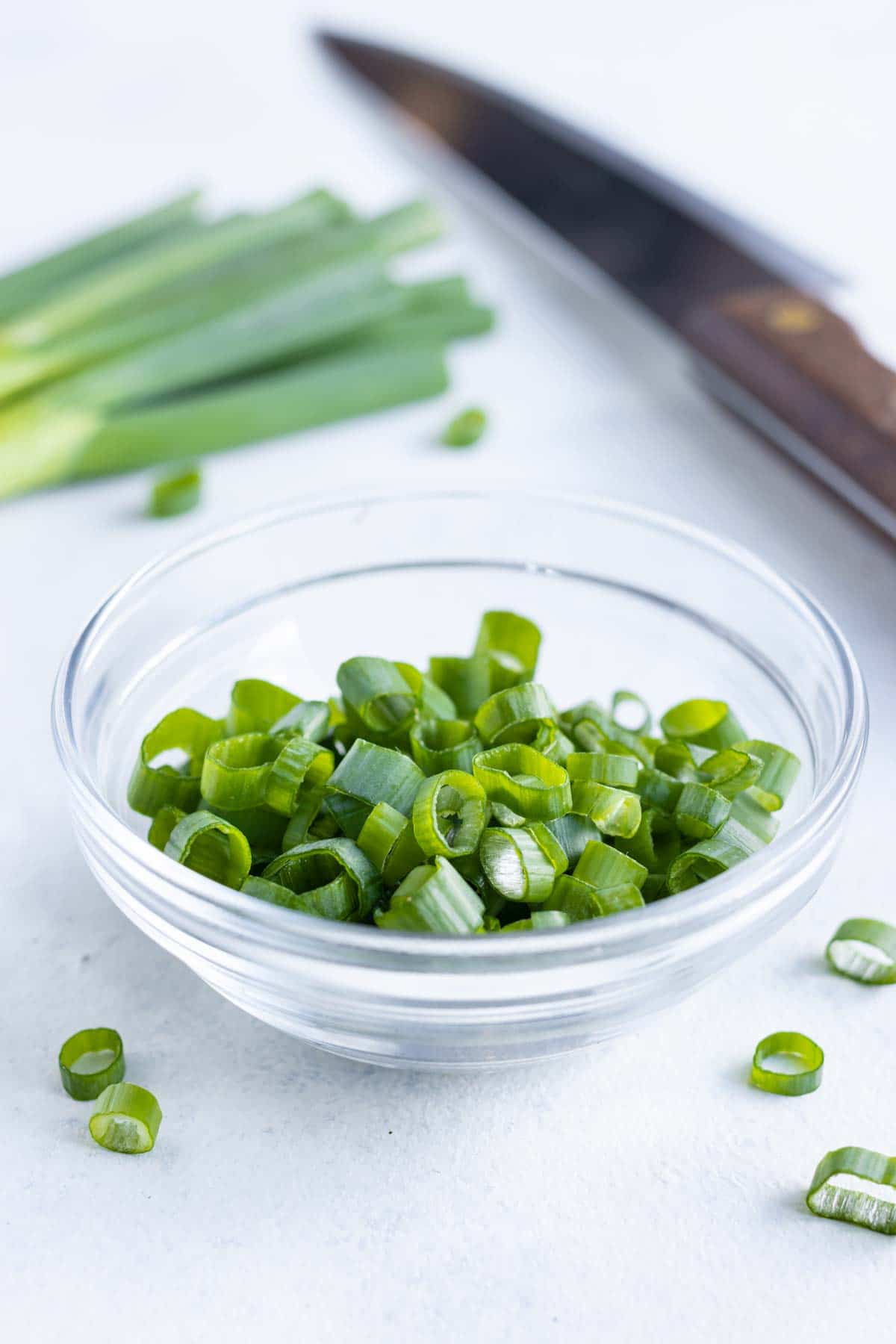
Recipes that Use Green Onions
Enjoy the amazing versatility of sliced scallions in both their raw and cooked forms across a wide variety of dishes:
- Crockpot Buffalo Chicken Dip
- Instant Pot Chicken Tortilla Soup
- Egg Roll in a Bowl
- P.F. Chang’s Chicken Lettuce Wraps
Green onions also serve as a very popular addition or garnish in dishes like potato salad, Japanese ramen, Vietnamese phở, and even delicious scallion pancakes!
Tap stars to rate!
How to Cut Green Onions
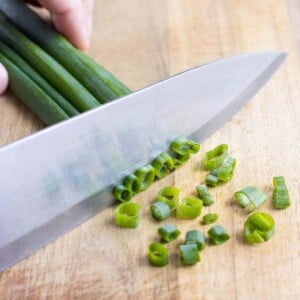
email this recipe!
Ingredients
- 1 bunch green onions
Instructions
- Rinse the green onions under running water, dry, and remove any wilted pieces.1 bunch green onions
- Cut off ¼ of an inch from both ends and remove the fuzzy root end and the broken green ends.
- Locate the junction where the green parts begin to branch off from the white base. Make a cut at this point.
- For the green: Cut perpendicular to the long axis of the onion to get perfectly round circles or cut at a bias, at an angle, to get more of an oval shape.
- For the white: Cut the white part in the same manner as you did the green, in a push-pull circular motion, and use for cooking.
Tap stars to rate!
Video
Notes
Storage Directions
Whole green onions can be washed and trimmed of old leaves ahead of slicing, and when properly stored, can keep in the refrigerator for up to 1-2 weeks. Sliced green onions, when stored in an airtight container – ideally, separated by whites and greens – can keep in the fridge for up to 5 days. For more information, see How to Store Green Onions. Either whole or sliced green onions may be frozen easily. They should be washed and left to dry completely before freezing, as excess water can cause freezer burn. Stored in an airtight container or freezer bag, they can keep in the freezer for up to 3-4 months. For more information, see How to Freeze Green Onions. Recipe Tips- Let it grow. Don’t discard the roots – if left with at least 1-1½ inches of stalk left above the bulb, they can be germinated and planted to grow a fresh batch of green onions.
- Stay sharp. Especially because of their delicate nature, a very sharp knife should be used when slicing green onions, to prevent bruising.
- Work in bulk. To save time, hold green onions together in a bunch in one hand while slicing with the other, instead of slicing them one at a time.
- Look for deals. Green onions are very inexpensive, but turn to places like your local Asian grocers for particularly good deals on green onions sold in bulk.
- Purchase wisely. When buying from the grocery store, keep an eye out for green onions that are fresh, crisp to the touch, and unbroken – limp stalks indicates a lack of freshness.
Nutrition
Nutrition information is automatically calculated, so should only be used as an approximation.

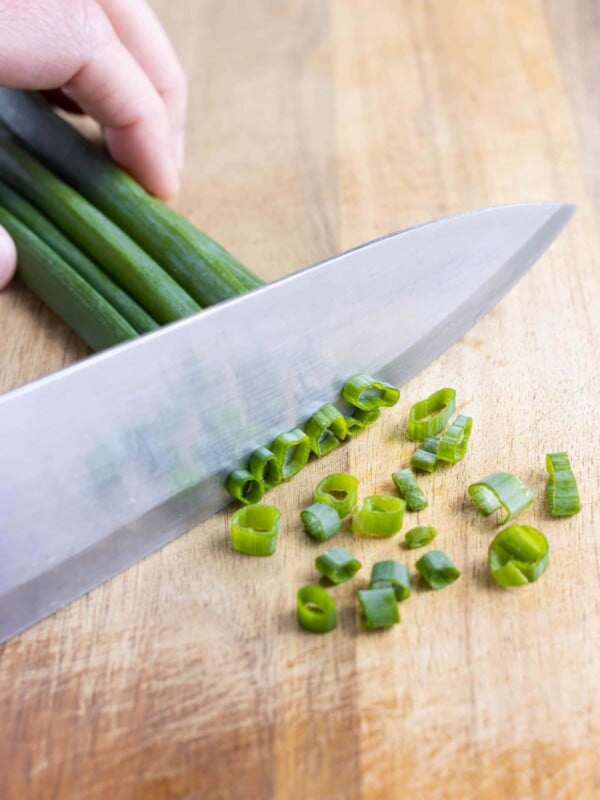
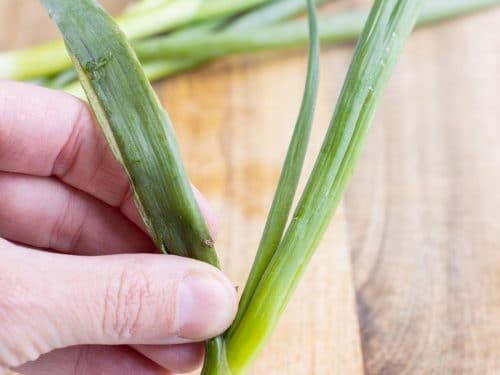
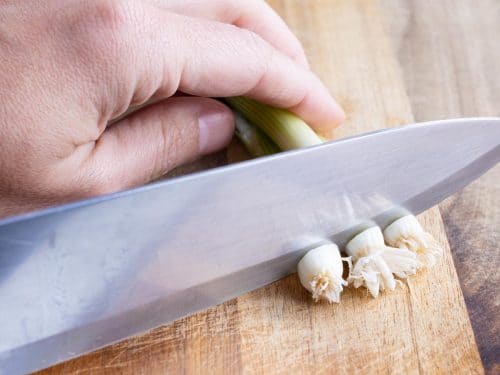
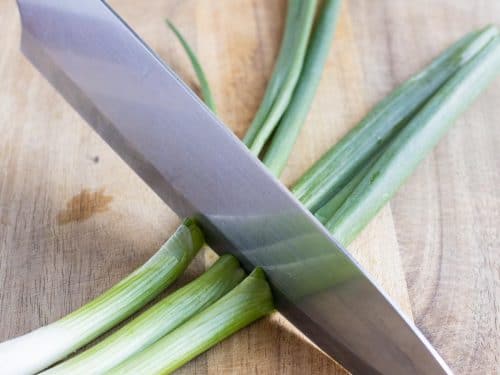
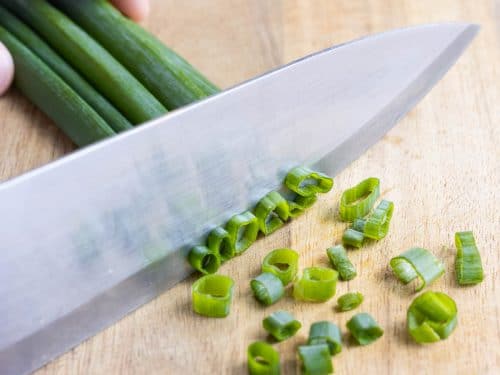
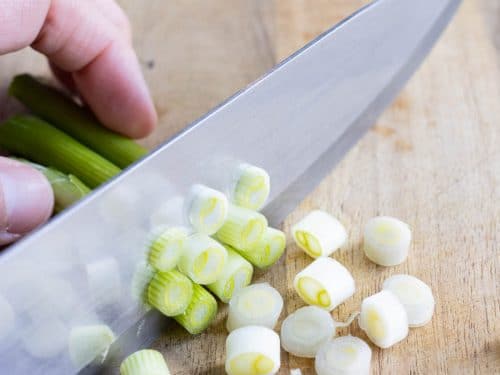
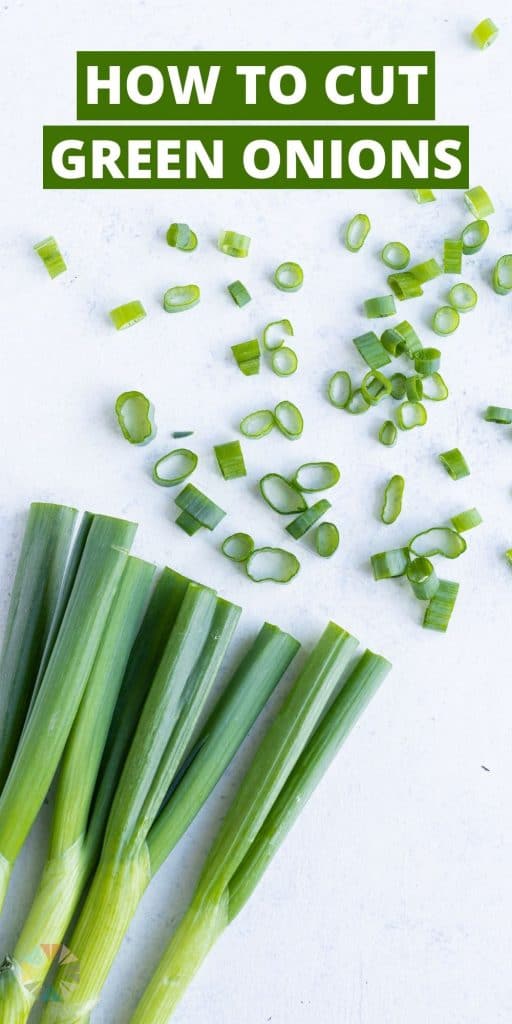

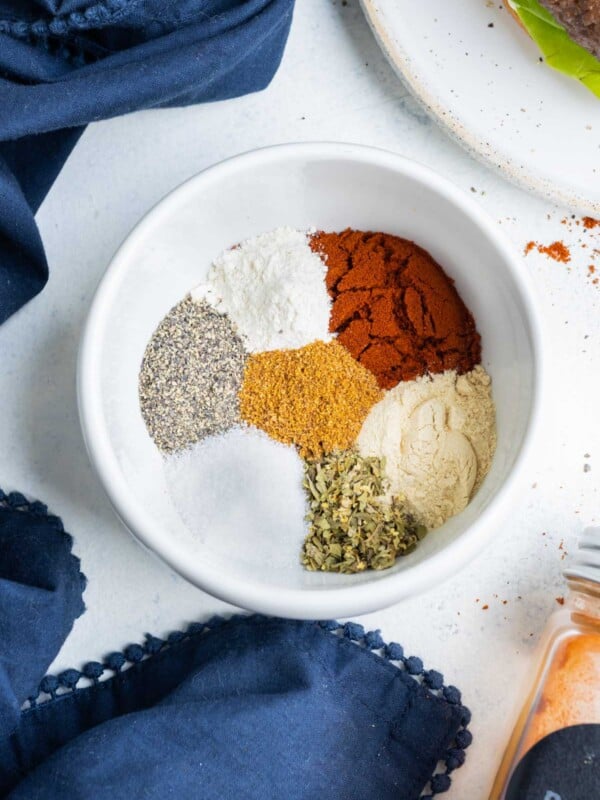

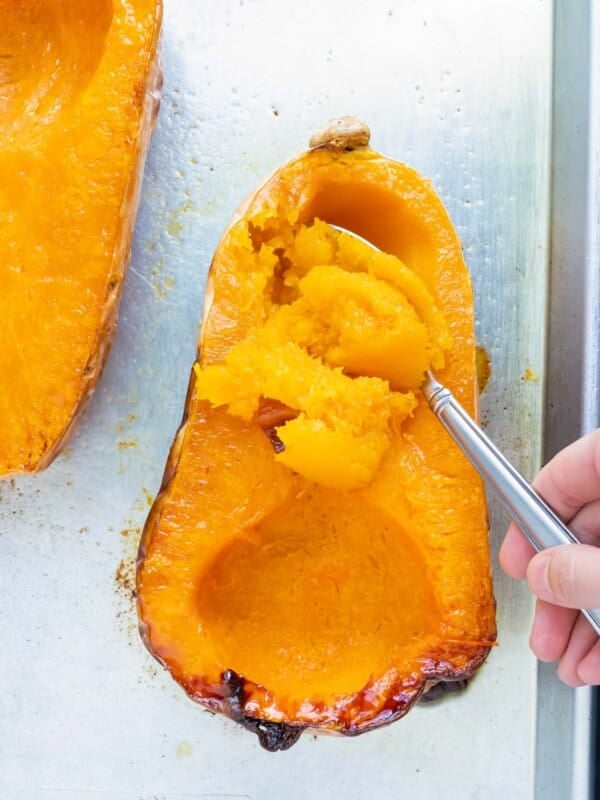
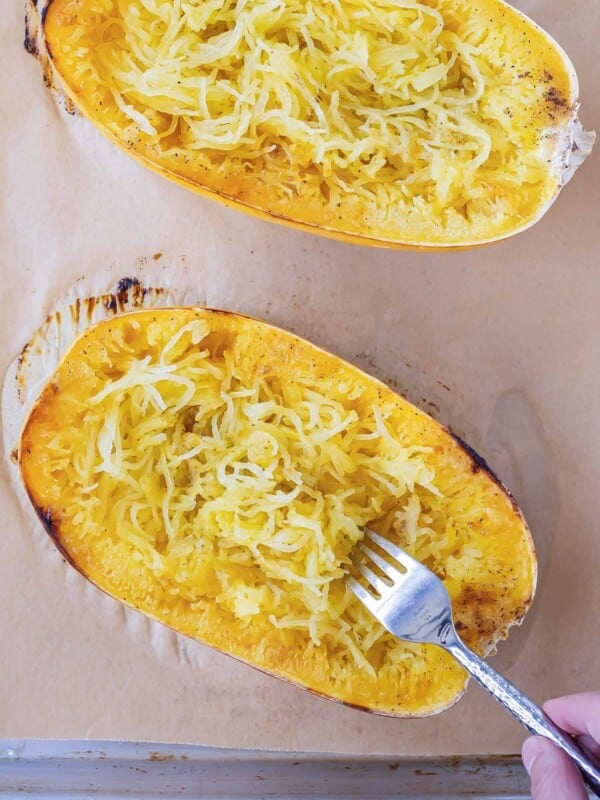
Great info. Personally, I use a pair of scissors to cut scallions and green onions instead of a knife.
Yay! So happy to hear you enjoyed the article! That’s a good tip. Thanks so much for taking the time to leave a comment!